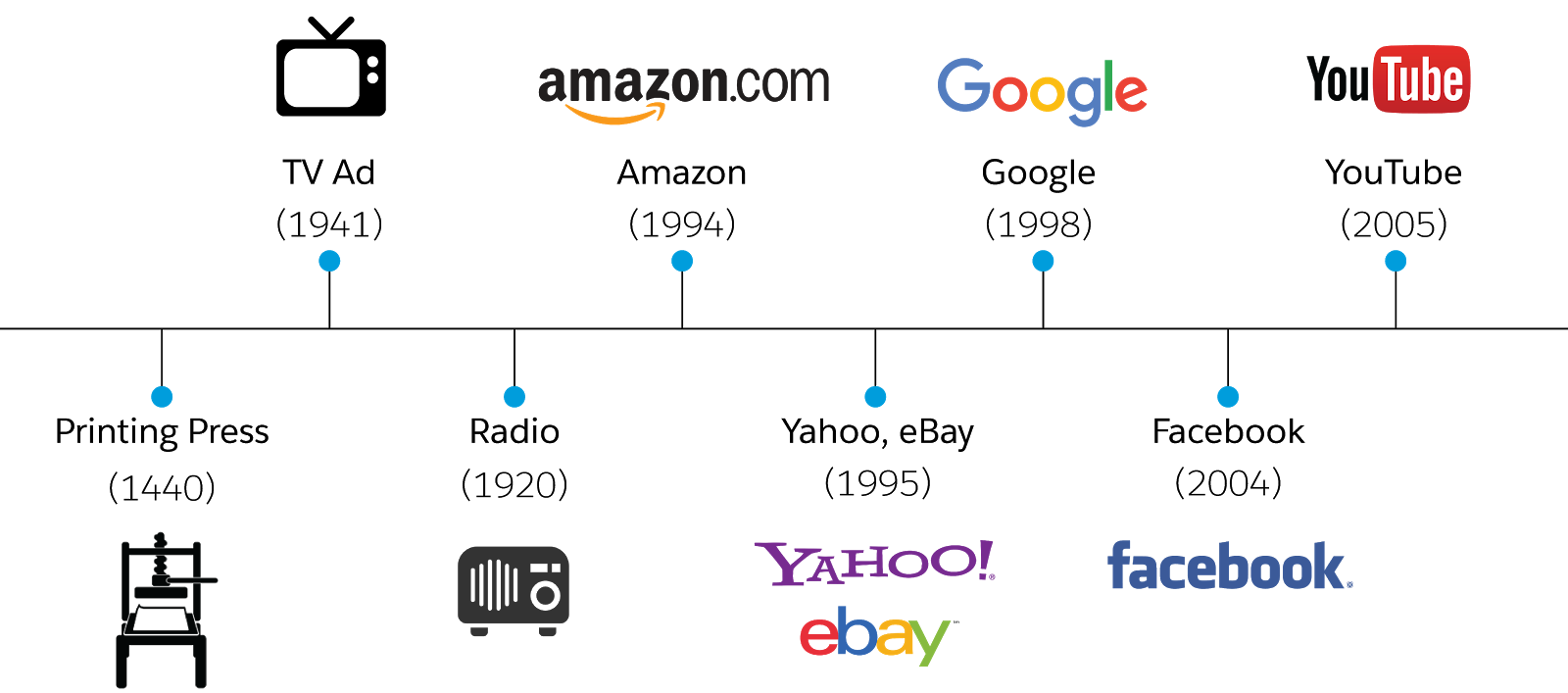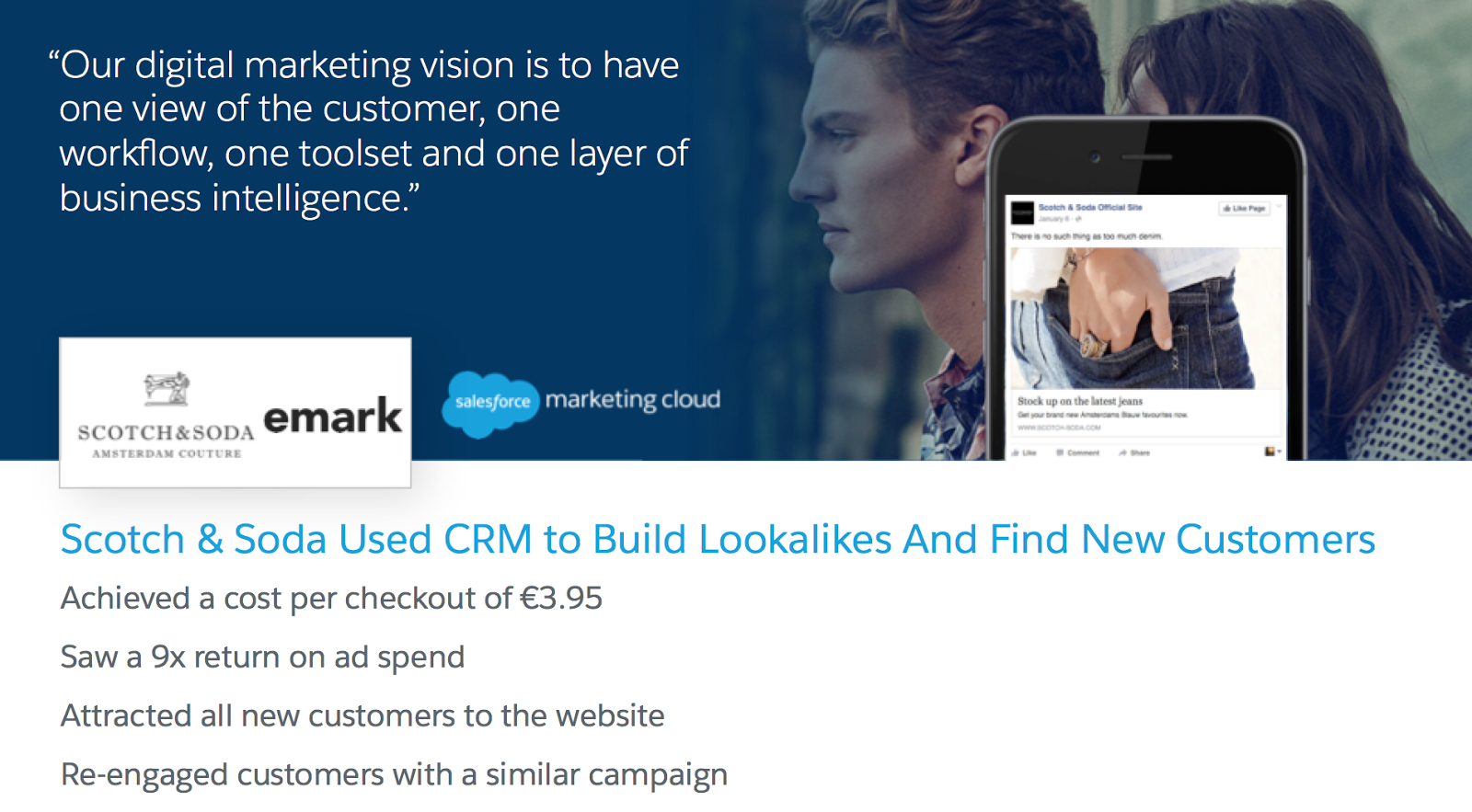


It must be difficult to be a modern CMO, particularly at consumer brands. Not only are you responsible for one of the largest budgets in the organization, with ever challenging business benchmarks to achieve, but you also face an industry going through massive transitions that make everything you do much more complex. Additionally now, many are tasked with things that go far beyond the realm of the historical definition of “marketing”.
Forrester reported last year that two thirds of CMOs now own the entire customer experience.
Two decades ago, your advertising dollars largely went to a combination of TV, radio, and hard copy print publications bought directly with media companies, usually with an agency involved. Broader marketing involved some combination of direct postal mail, sponsorships, hosted events, booths at conventions and some other creative endeavors depending on the business.

At that time, the consumer internet was in its earlier stages. Amazon, eBay, and Yahoo had a role to play but certainly not widely known; brands like Google were still a couple of years away; and Facebook and the social era almost a decade into the future. You were likely beginning to establish a website but were unsure of its purpose. f your were advanced, you might have been marketing to people via email.
In other words in the mid-nineties:
Your primary messaging channels were fewer and more stable
You relied heavily on your agency to deal with advertising and creative
If you invested in digital, you likely relied on the expertise of your IT department to figure out what to do
You didn’t interact much with the teams responsible for customer service
Fast forward two decades, and today new messaging channels are being thrown at you seemingly monthly (i.e. tweets, pins, filters, live video). The expertise of your long standing agency partners who partnered with you for TV and print may be out of touch with modern digital marketing. Then your newer agency partners for digital media and creative, while on the pulse of ensuring your brand is relevant to a younger audience is new channels, but are staffed by professionals very early in their career so missing the experience and nuance of the larger complexities and challenges of your business.
And finally you have now become the owner of the technology stacks that power this digital revolution. With every new channel and way of reaching your customers, there is seemingly a whole new encyclopaedia of terminology and vendor brand offerings you need to grasp.
There is a simple way to navigate the noise and manage the inevitable change. It comes back to the core mission of your organization and the primary business goals you are tasked with. At the end of the day you are still responsible for driving leads, sales, traffic to digital properties and events, and increased brand awareness.
The mission of your company must align to your choice of marketing tactics, from advertising channel to email copy. If your goal is to sell stylish retail fashion to young professional women and grow by 20% this year, then your choices should be centered around what would allow your team to best achieve that. In other words;
How do you best reach your existing customers and ideal new prospective shoppers in a way that is authentic to their unique experience with your brand and ultimately compels them to buy and be an advocate for your brand to their network?

One of the best recent examples of this I have come across is the fashion retail brand Scotch and Soda. In partnership with their agency Emark, one of their goals is to find more customers that look like their best customers and get them to buy at their ecommerce store. Its marketing team uses customer intelligence, like understanding the profile of their best customers, based on characteristics of how they interacted with past marketing messaging like email and past purchase history. Then they use that seed audience as the basis to find lookalike audiences on Facebook and among other great results achieved a 9x return on advertising spend.
This is the recipe for success for the modern CMO. You must develop a deeper intelligence about your customers and wider audience market across their entire interaction with your brand from awareness to initial interactions to service and advocacy. Then use that as a basis for executing a strategy and campaign to achieve any business goals like increase sales or higher retention. The choices for the best technology and channels to achieve this then become very clear.
To learn more about advertising trends happening today, check out our Future of Advertising eBook